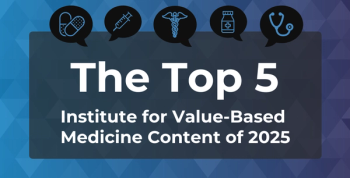
Navigating Biosimilar Mandates and Prior Authorization in a Value-Based Cancer Care Model: Jason Bergsbaken, PharmD, MBA, BCOP
Jason Bergsbaken, PharmD, MBA, BCOP, highlights the operational challenges of value-based oncology care while emphasizing the need to balance standardized treatment pathways with flexibility for personalized, biomarker-driven care.
At a recent
Biosimilar adoption has brought significant benefits but also operational hurdles, including payer-specific product mandates, inventory management, and increasingly complex prior authorization processes, according to Bergsbaken. These require substantial resources and coordination between prior authorization teams and frontline staff to ensure timely patient care.
Bergsbaken also addressed the balance between standardized, pathway-driven care and the need for personalized, biomarker-informed treatment, especially in rare or late-line cancer settings. His institution maintains strict formulary oversight through multidisciplinary review aligned with National Comprehensive Cancer Network (NCCN) and FDA guidance, while allowing patient-specific regimen reviews via peer validation to accommodate unique clinical scenarios. This dual approach aims to preserve the safety and consistency of standardized care while maintaining flexibility for individualized treatment decisions.
This transcript was lightly edited; captions were auto-generated.
Transcript
What operational or billing challenges have you faced when implementing value-based initiatives, and how have you addressed them?
Value is an interesting term. There are different ways in which to define it. Generally, we think of outcomes over some sort of cost. One of the challenges, which is getting increasingly complex, is that value may be different to different stakeholders within a very complex health system and health care environment. Obviously, we're centered on the patient and what that value looks like to the patient, but that may be different to the health system, the provider, and the health care system as a whole.
I think sometimes with some of the various challenges we face, we face varying factors in that equation, which we try to balance as well as we can. Specifically with biosimilars, which you asked about, I think those have been extremely important and advantageous for our systems as well as our patients. Though [biosimilars] do create some challenges. I think, a few specific ones that we grapple with every day are the prior authorization or insurance piece, but we often see payer-specific mandates for a specific biosimilar, which—on the health system side—then requires us to be able to operationally support that mandate, which may be a different drug for a different patient, inventory considerations, and all the things that follow. Those are challenging on the whole as well.
You mentioned prior authorizations, which are also always a challenge, and increasingly complex. I think our prior authorization teams are trying to understand and implement increasing requirements on the payer side in terms of the complexities of how we actually go about getting approvals, and some of the requirements that then may be included, and then once they make that determination, it's also about communicating that to the frontend stakeholders, and how we operationalize and give that patient that treatment. The ecosystem as a whole is just increasingly complex. On the health system side, we're spending and using increasing resources to try to account for that.
As pathway adherence becomes more central to value-based care, how do we balance standardization with the need for personalized, biomarker-driven treatment—particularly in rare or late-line settings?
At our institution, we do maintain pretty tight institutional controls in terms of our formulary process and how we evaluate agents and regimens as we bring them aboard. Certainly, we look to NCCN and FDA as examples of reasons and rationale that would support that inclusion. But we do our due diligence in our multiple multi-disciplinary groups of what agents we want to bring aboard and how we want to restrict them within the health system.
At our institution, we have not employed an external pathway company, but that essentially is the way in which we've gone about it. Outside of our standardized process, at our institution we do also employ a process where regimens could be reviewed on more of a patient-specific fashion, so we recognize that there are these increasingly personalized complexities that might challenge the standard paradigm. We want to have a process that would allow us to go validate via peer review the efficacy and safety of that type of request, and then ultimately have that check before we would deliver it to a patient. We certainly value both. I think there's room for both. We want to make sure we have definite standardization, which I think supports safety and uniformity, but also to be heavily-focused on patient needs, and we have a process for that as well.
Newsletter
Stay ahead of policy, cost, and value—subscribe to AJMC for expert insights at the intersection of clinical care and health economics.







































